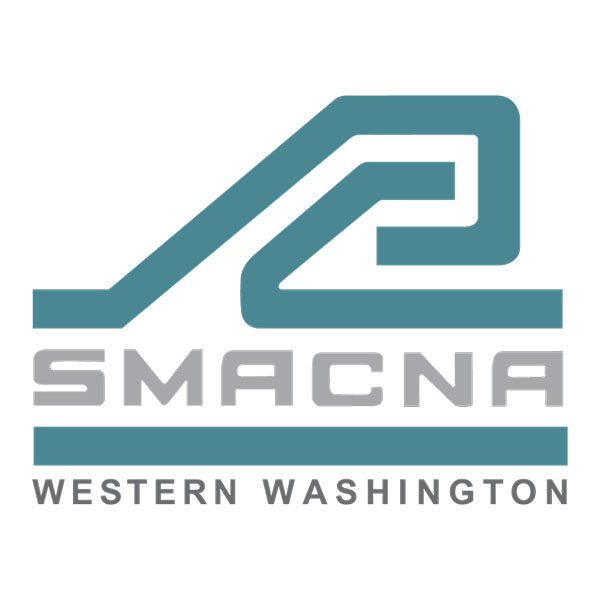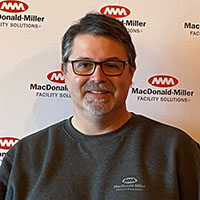Committee Spotlight: Lee Pyfrom, Chairperson Risk Management Committee
Article from Sheet Metal Journal Western Washington Spring 2021 Edition:
SMACNA-Western Washington’s Risk Management Committee has a clear and important objective: improving the safety of all the sheet metal workers in Washington State, and even nationally, by developing policies and training.
The committee’s chairperson, Lee Pyfrom, Director of Safety for SMACNA-Western Washington member MacDonald-Miller Facility Solutions, says this is one of the reasons he is passionate about his work on the committee.
“The first reason I became involved with the committee is that I love the mission of trying to make the industry as a whole better and safer,” he says. “That is great for everyone. The other reason is that I respect the trade. My grandfather was a sheet metal worker in Chicago. The people on the committee are well-respected safety professionals. It is really nice working with a group of people where we can all collaborate to make the industry better and safer.”
The committee has implemented a number of important initiatives, including a yearly Safety and Technology conference, which is well attended and includes exhibitors, such as safety suppliers and tool companies. The highlight is presentations and panels on a variety of safety topics.
“Those topics could be a panel discussion on how to implement a safety plan or a having an attorney speak about the pitfalls and ways to protect a company and ensure compliance with regulations,” Pyfrom says. “It could be an ergonomics topic, fall protection, or any number of safety related topics.”
The Safety and Technology Conference is usually held in the spring, but has been postponed until September 2021 because of COVID restrictions. Its main event this year will be a panel discussion about risk management and safety culture best practices post-COVID.
Another initiative Pyfrom is proud of is the committee’s development of a safety-related video series covering Asbestos and Lead Awareness, Fall Protection Safety, and Ladder Safety.
“We made these training programs into videos and sent them to the union companies for free,” Pyfrom says. “This helps ensure smaller companies who may not necessarily have dedicated safety staff are able to train their employees effectively.”
Pyfrom wants to encourage the membership to share with the committee ideas about any topic they would like researched or discussed for the purpose of training or education in the future.
“It would be great to get their feedback,” he says. “I think it is also important that the membership know that the work we all do carries risk, but nothing is more important than all employees going home safely at the end of every day. Nothing is important enough to risk their health and safety.”
Pyfrom has been with MacDonald-Miller Facility Solutions and on the committee for seven years, but he has been a safety professional for 17 years, including seven with the Washington State Division of Occupational Safety and Health.
He says that over the course of his career, the most important change in safety has been a shift in the culture of compliance and care.
“The most impact has been the crew buy-in to safety and the foreman’s ability and courage to lead and intervene and make sure employees work safely,” Pyfrom says. “I think a couple of things have changed that. People are truly understanding that companies want them to work safe first, as opposed to back in the day when the safety person might give direction but then leadership would tell employees otherwise.”
Because construction is inherently dangerous, any employee can practice safe work habits all day every day for 30 years and then let their guard down for 30 seconds and something terrible could happen.
“That is why there is no need to get defensive about safety,” Pyfrom says. “If something is happening on the job site that isn’t safe, we just need to review it, figure out how to fix it, and move on.”
Safety professionals can develop policies and push safety training, but success is a team effort.
“At the end of the day, the employees have to come to the training with an open mind and willingness to implement those practices,” Pyfrom says. “Leadership needs the courage to follow-up and the skills to present the material in a way that encourages buy-in.”

 “The first reason I became involved with the committee is that I love the mission of trying to make the industry as a whole better and safer,” he says. “That is great for everyone. The other reason is that I respect the trade. My grandfather was a sheet metal worker in Chicago. The people on the committee are well-respected safety professionals. It is really nice working with a group of people where we can all collaborate to make the industry better and safer.”
“The first reason I became involved with the committee is that I love the mission of trying to make the industry as a whole better and safer,” he says. “That is great for everyone. The other reason is that I respect the trade. My grandfather was a sheet metal worker in Chicago. The people on the committee are well-respected safety professionals. It is really nice working with a group of people where we can all collaborate to make the industry better and safer.”